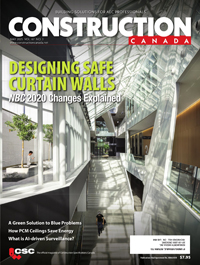Architectural duo opts for striking facade material in Sudbury arts centre project
The specified slider does not exist.
Moriyama & Teshima Architects (MTA) and Belanger Salach Architecture (BSA) selected Corten steel as a dominant material for Place des Arts (PdA), built in Sudbury, Ontario, to give the centre a glowing, orange hue.
The material, also known as weathering steel, is a type of metal that is strong and contains low levels of some special alloys, which lend themselves to creating a stable rust layer, adhering to the base metal. This results in improved resistance to corrosion caused by the atmosphere. Rather than deteriorating, the surface of the steel alloy oxidizes and develops its own protective film. As this surface layer develops over time, the durability and appearance of both the Corten steel itself and any products made from it are enhanced by the weathering process. Therefore, any cladding or products made from this material will have a distinctive and rustic appearance.
PdA is a unique art centre in northern Ontario, bringing together seven member organizations. Its purpose is to serve as a hub of excellence for Sudbury and its francophone communities, aimed at creating a space that fosters interactivity and connectivity, allowing member organizations to continue to collaborate and thrive. The creation of PdA also aligns with the Greater Sudbury Downtown Revitalization Masterplan, and close consultation was carried out with each of the seven member organizations to ensure their respective programs and activities were well represented in the new facility.
The building, located at the corner of Larch and Elgin streets in downtown Sudbury, was constructed on a former vacant city parking lot. It comprises a three-storey building with a 300-seat theatre, a 120-seat black-box studio theatre, a rehearsal space, a youth studio, a daycare for 24 children, and spaces for children’s summer camps and specialized after-school programs related to the arts. Additionally, the building features a multimedia art gallery, a bistro, a gift shop, and meeting rooms accessible to the community. The third floor is dedicated to administrative spaces for the seven founding cultural arts organizations in charge of the centre’s programming.
The layout of the centre maximizes natural light at the front-facing areas, such as entrances, galleries, lobbies, and cafeterias, using clear glazing. Meanwhile, the back of the facility areas, such as the auditorium and offices of the member organizations, are mostly secluded from the light with the steel cladding.


